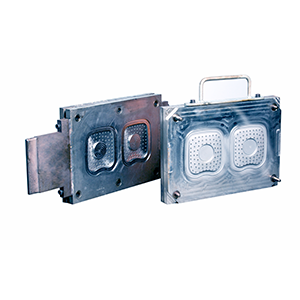Hey there, fellow rubber enthusiasts! Welcome back to the YJC Polymer blog, where we dive deep into all things silicone. Today, we’re delving into the fascinating world of Silicone Rubber Compression Molding – and trust me, you’re in for a squishy treat!
Silicone rubber compression molding is a process used to manufacture functional rubber products. Utilizing uncured rubber or elastomers, where elastomers exhibit resilience or memory to return to their original shape under pressure or distortions. Silicone rubber, often synthetic, undergoes controlled chemical processes, making it ideal for applications requiring material expansion and shape retention.
In this molding process, solid silicone rubber is pressed into a metal cavity, triggering a chemical reaction when exposed to heat. While specific methods may vary, all silicone rubber manufacturers employ a heat and pressure approach to produce molded silicone rubber products.And here is a video about compression molding, you can see the process in action, it is amazing my friends.
Steps in Silicone Rubber Compression Molding
- Preforming of uncured silicone rubber to control weight, shape, and specifications.
- Placement of the solid silicone rubber preform into the mold cavity.
- Compression of the mold, closing and shaping the solid silicone rubber to fill the mold’s cavities.
- Maintenance of closed mold under pressure and temperature for optimal curing.
- Removal of compressed silicone rubber products from the mold, concluding the process for subsequent cycles.
 Benefits Of Silicone Rubber Compression Molding:
Benefits Of Silicone Rubber Compression Molding:
- Risk of Contamination: Colored silicone poses a susceptibility to contamination during the molding process.
- Potential Need for Transfer or Injection Molds: Depending on the complexity of the part configuration, transfer or injection molds may be necessary.
- Limited Suitability for Complex Part Configurations: Compression molding is more suitable for straightforward and less intricate part designs.
- Longer Cure Times: The cycle time for compression molds, ranging from 1-6 minutes, is comparatively slower than injection molding.
- Higher Human Capital Investments: Manual removal of flash in compression molds leads to increased labor costs.
- Parts May Require Deflashing: The occurrence of flash may necessitate manual trimming, impacting productivity and generating additional waste.
- Produces Intermediate Tolerances: Compression molding may result in parts with less consistent tolerances.
Summary:
If you require technical assistance or support for your Molded Silicone products or Compression-molded Silicone projects, feel free to reach out to us. We possess the expertise and capabilities to guide your Silicone products from concept to realization.
Thanks for joining us on this rubbery adventure. Until next time, stay squishy, my friends!If you come across this article and have any other thoughts, feel free to get in touch as we would love to hear from you